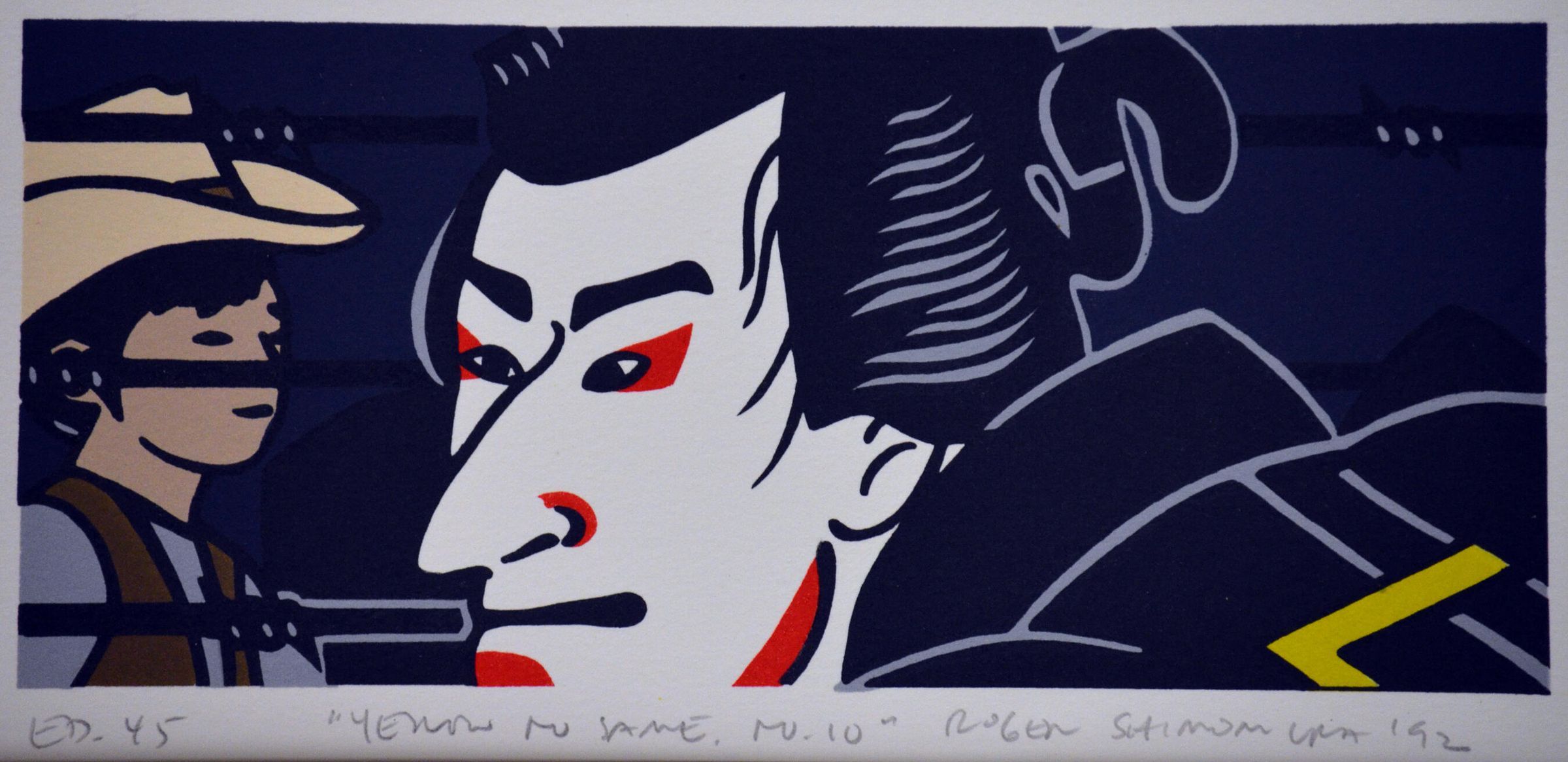Label
Label from 2014.Art for Social Change:
Despite the fact that he was a third generation Japanese-American, Kansas University emeritus art professor Roger Shimomura and his family were interned in one of the concentration camps for people of Japanese descent that were opened after the attack on Pear Harbor in 1942. This suite of prints thus explores the inability of Americans to distinguish between Japanese nationals and U.S. citizens. The actual title refers to the artist’s high school experience of Japanese American students chanting “Yellow No Same” to indicate that they were not the same as the Chinese American students.
In these twelve works, Japanese persons stereotyped as Kabuki actors stand on one side of a barbed fire fence. With traditional face paint, hairdos, and weapons, they are stylized in the manner of eighteenth and nineteenth-century Japanese woodblock prints. Behind the barbed wire, in contrast to the actors, are Japanese Americans, who are themselves stereotypes of “average” Americans with baseball and cowboy hats, pigtails and contemporary American dress and hairdos. In their stylized, flattened forms, bright color, and lack of three-dimensional space, these works demonstrate the influence on the artist of both American Pop Art of the 1960s and Japanese woodcuts, the popular art of their day. This irony was not lost on Shimomura.Label
2024, “In This Place: American Dreams”
From 1942 to 1944, Roger Shimomura and his family were detained at the Minidoka War Relocation Center, an internment camp for Americans of Japanese descent. The experience left a deep impression on Shimomura, who was a child at the time. Using a style inspired by sources like American comic books and Japanese woodblock prints, he has created many works of art that evoke life in the camp.
Shimomura’s series Yellow No Same critiques the history of stereotyping and discrimination that led to the internment of Japanese Americans. Flat, graphic depictions of soldiers, cartoon characters, 18th-century Kabuki actors, and other figures stand across from one another, separated by a barbed wire fence—a frequent motif in Shimomura’s work that evokes his experiences at Minidoka. The works encourage us to consider our own cultural generalizations and assumptions.
